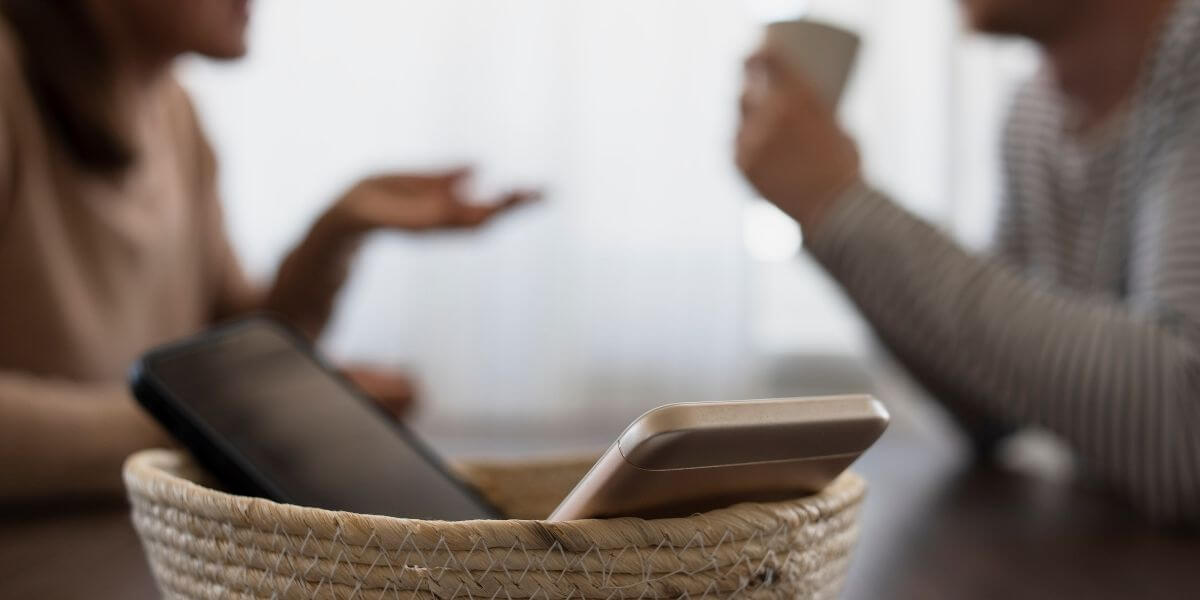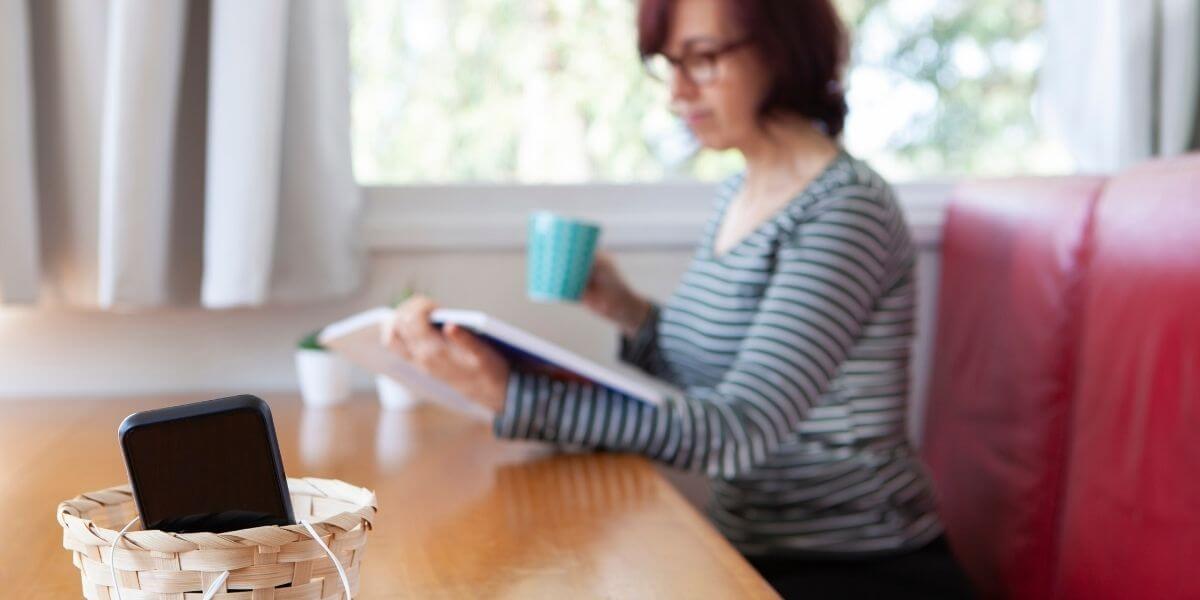Digital devices are awesome. They’re entertaining and educational, they make us smarter and more productive, and they’re even a source of livelihood for many. But somehow, they’ve taken full control of our lives and we can’t seem to last the day without them. So, if you’re wondering how you can possibly take your life back, read this post. Today, you’ll learn why doing a digital detox is fast becoming a necessity for most of us!
Table of Contents
What’s a digital detox?
Think of a digital detox as a device-free period or a “gadget diet”. It’s when you take a breather from your devices and reconnect with yourself and the offline world. Why? Because there’s more to life than your television, laptop, tablet, and smartphone combined! And before you start breaking out in a cold sweat (oh no! no internet! no social media!), this is just a temporary thing. Well, unless you choose to make it permanent, of course.
Who needs it?
Anyone who finds it difficult to “switch off” and maintain proper work-life balance can benefit from a detox. There’s a growing “always on” work culture thanks to the proliferation of laptops and smartphones. Even outside office hours, people continue to check messages and notifications from work, which can lead to mental exhaustion and interference with personal life (1). But it’s not just working adults who can use a digital break from time to time, even our kids need it, too!

6 benefits of doing a digital detox
A digital detox isn’t mandatory, but it’s a welcome respite for your mental, emotional, and physical health. Allow your eyes, mind, and body to decompress and recalibrate. Here’s what you get from going offline every once in a while:
1) Give your eyes a break
How many hours a day do you spend in front of a screen? 6? 8? 12? More? A study published in the BMJ Open Ophthalmology journal estimates that more than 50% of computer users suffer from digital eye strain. It’s linked to binocular vision stress and dry eyes, a condition where the eyes don’t produce enough tears (2). By going on a detox (the longer period, the better), you’re giving your eyes time to rest and recover.
2) Be more mindful
It’s not easy to be mindful when you’re constantly bombarded with text messages, emails, social media notifications, and anxiety-inducing news reports. But by going on a digital sabbatical, you learn to be more aware of your thoughts and emotions. With fewer distractions, you can reconnect with yourself, your family and friends.
3) Improve relationships
Have you ever found yourself in this situation? You’re sitting with a group of people (maybe family, friends, coworkers) but there’s not a lot of talking going on. Instead, everyone is glued to their phones, even though there’s a warm human being within arm’s reach! By doing a digital detox, you learn to put technology to the side so you can enjoy quality time with the people around you.

4) Sleep better
Having trouble sleeping? A meta-analysis published last year (more than 35,000 total participants spread out in 23 studies) showed that Internet addiction led to sleep problems, including a significant reduction in number of hours slept (3). If you want to get better quality sleep at night, try doing a digital detox.
5) Improve productivity
Digital devices are kind of a double-edged sword. With the right tools and apps, you can get a lot of work done in a short amount of time. However, there are also a lot of distractions, which can cause your productivity to take a deep dive. So, if you think your productivity is tanking, do a quick detox to clear your head, so you can focus on what really matters.
6) Reduce anxiety and improve mental health
The web is amazing, but if you’re not careful, you can quickly get lost in a rabbit hole of doom and gloom. Think of all the bad news you see, all the crimes and natural disasters. Or how about the glamorous things you see on your social media feed that makes you feel inadequate? By going offline, you can spare yourself the anxiety. Get a mental breather, so to speak.

How often should you detox?
Now that you know all the wonderful benefits of digital detoxing, how often should you do it? Well, there’s no right or wrong answer here. You can do it as often or as seldom as you like. You can even do mini digital detoxes every day if you like.
For example, if your work involves computers, you can go “offline” during your lunch break. You can turn your phone notifications off, so you don’t get tempted to take a peek. Take a walk and enjoy the scenery. Talk to people. Write your thoughts in your journal. Do something that does not involve looking at a screen!
How to do a digital detox?
There are many different ways to do a digital detox, but the main thing is to stay away from ALL of your favorite digital devices. These include your computers, tablets, smartphones, not-so-smart phones, e-readers, even your TV. As long as you’re “unplugged” and “disconnected” from the digital/online world, you’re detoxing. Follow these tips for a successful digital detox program:
1) Plan it out
It’s hard to do any kind of detox without a plan. You know firsthand just how addicting digital devices are, so winging it just won’t cut it. You’ll likely feel very anxious because of FOMO (fear of missing out). That said, here’s what you can include in your digital detox plan:
- Your offline activities – what are you going to do the entire time you’re away from your devices
- What do you want to achieve – what you want out of the experience
- Set a strict timeline – what time of day or week are you going to do it? Once you’ve decided, block the time/date on your calendar.

2) Be realistic
Going on your first detox won’t be easy. I mean, how often do you check your phone in a day? Going cold turkey can do more harm than good, so be realistic with your goals. Don’t plan an entire detox week if you can’t even do it in half a day. Take baby steps first and once you’re comfortable with the mini detoxes, then you’re ready to go to the next level!
3) Let your colleagues and family members know
Do this as a courtesy, so their lives don’t come to a screeching halt, especially if they’re waiting on you for something important. For instance, if you’re “on call” during the weekend, tell the person in-charge you’ll not be available so they can look for someone else to cover for you. Likewise, your family members may get worried and call the cops if they can’t reach you!
4) Designate a no-screen zone in your home
It can be your bedroom, kitchen, porch, garage, etc. as long as there are no digital devices around to tempt you. Consider making this a permanent arrangement too, so you can easily go into one room if you want a quick break from the digital world.

5) Write down your experience in a journal
There are a lot of benefits to journaling. It can be therapeutic to record your thoughts and feelings during your detoxing sessions. You can write down all the activities you’d like to do next time. And it’s always fun to look back and read old journal entries to see how far you’ve come in your journey!
6) Make detoxing a habit!
The easiest way to make detoxing a regular occurrence in your life is by turning it into a habit. Habit formation requires time, discipline, and commitment, and it can take anywhere from 18 to 254 days to officially turn a routine into a habit (4).
So, to make detoxing a habit, trying doing a mini detox daily. By consistently unplugging and disconnecting at the same time every day, you’ll eventually get used to your new, device-free routine!
Conclusion
The thought of living a life without digital devices is quite hard to fathom, isn’t it? We use them for both work and pleasure so much that it’s hard to imagine life without them. But there is so much that goes on in the offline world, it’s important to remain connected with everything that goes on around you. A digital detox will help you enjoy the best of both digital and offline worlds, so do consider the tips we’ve shared in this article!
💬 Something on your mind? Share your thoughts in the comments. We love hearing from curious minds.
📩 And while you’re here, join our newsletter for more smart stuff (and secret perks)!
References
(1) Blackburn, Nikhita, and Helen Rayner. “Type and the Always-on Culture – A Research Study from The Myers-Briggs Company.” The Myers-Briggs Company, 2019, https://ap.themyersbriggs.com/content/Type_and_the_always_on_culture__TheMyersBriggsCo_2019.pdf
(2) Sheppard, Amy L, and James S Wolffsohn. “Digital eye strain: prevalence, measurement and amelioration.” BMJ open ophthalmology vol. 3,1 e000146. 16 Apr. 2018, doi:10.1136/bmjophth-2018-000146
(3) Alimoradi, Zainab et al. “Internet addiction and sleep problems: A systematic review and meta-analysis.” Sleep medicine reviews vol. 47 (2019): 51-61. doi:10.1016/j.smrv.2019.06.004
(4) Lally, Phillippa, et al. “How Are Habits Formed: Modelling Habit Formation in the Real World.” European Journal of Social Psychology, vol. 40, no. 6, 2009, pp. 998–1009. Crossref, doi:10.1002/ejsp.674.




